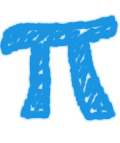Understanding arithmetic and geometry through cutting and pasting
Date: Thu, Sep 21, 2023
Location: Online
Conference: PIMS Network Wide Colloquium
Subject: Mathematics, Algebraic Geometry
Class: Scientific
Abstract:
Euler’s famous formula tells us that (with appropriate caveats), a map on the sphere with f countries (faces), e borders (edges), and v border-ends (vertices) will satisfy v-e+f=2. And more generally, for a map on a surface with g holes, v-e+f=2-2g. Thus we can figure out the genus of a surface by cutting it into pieces (faces, edges, vertices), and just counting the pieces appropriately. This is an example of the topological maxim “think globally, act locally”. A starting point for modern algebraic geometry can be understood as the realization that when geometric objects are actually algebraic, then cutting and pasting tells you far more than it does in “usual” geometry. I will describe some easy-to-understand statements (with hard-to-understand proofs), as well as easy-to-understand conjectures (some with very clever counterexamples, by M. Larsen, V. Lunts, L. Borisov, and others). I may also discuss some joint work with Melanie Matchett Wood.
Speaker biography:
Ravi Vakil is a Professor of Mathematics and the Robert K. Packard University Fellow at Stanford University, and was the David Huntington Faculty Scholar. He received the Dean's Award for Distinguished Teaching, an American Mathematical Society Centennial Fellowship, a Frederick E. Terman fellowship, an Alfred P. Sloan Research Fellowship, a National Science Foundation CAREER grant, the presidential award PECASE, and the Brown Faculty Fellowship. Vakil also received the Coxeter-James Prize from the Canadian Mathematical Society, and the André-Aisenstadt Prize from the CRM in Montréal. He was the 2009 Earle Raymond Hedrick Lecturer at Mathfest, and a Mathematical Association of America's Pólya Lecturer 2012-2014. The article based on this lecture has won the Lester R. Ford Award in 2012 and the Chauvenet Prize in 2014. In 2013, he was a Simons Fellow in Mathematics.



